Gris, by Nomada Studio, is a platform game with art of paralyzing beauty, and visual and design influences taken from games such as Monument Valley or Journey.
The narrative doesn’t carry the weight of a heavy plot, but it rather develops some themes through cinematics, and exposing certain motifs in its gameplay, by using resources like color, light, or physical distance.
In this analysis I’d like to focus in the latest. How can a game like Gris make, not only a skilful, but also a meaningful use of distance, which we usually take for granted as a property of space and a basic component of the game feel, but rarely as an entry point for thematic exploration?
The feeling I got when I played this game is that the way obstacles and props are displayed in the scene, and the way the main character interacts with them, exposes a rich spectrum of perspectives on distance.
What I like the most, though, is that only a few elements are used and combined throughout all the game, and still, they achieve great depth and variety, which delivers a master class in elegant level design.
Finally, as the nature of the media allows the player to experience this physical distance while being in control of the character, there’s a sort of emotional connection between both, which allows for a deeper and more memorable exploration of the theme.
Platform game mechanics to support a theme
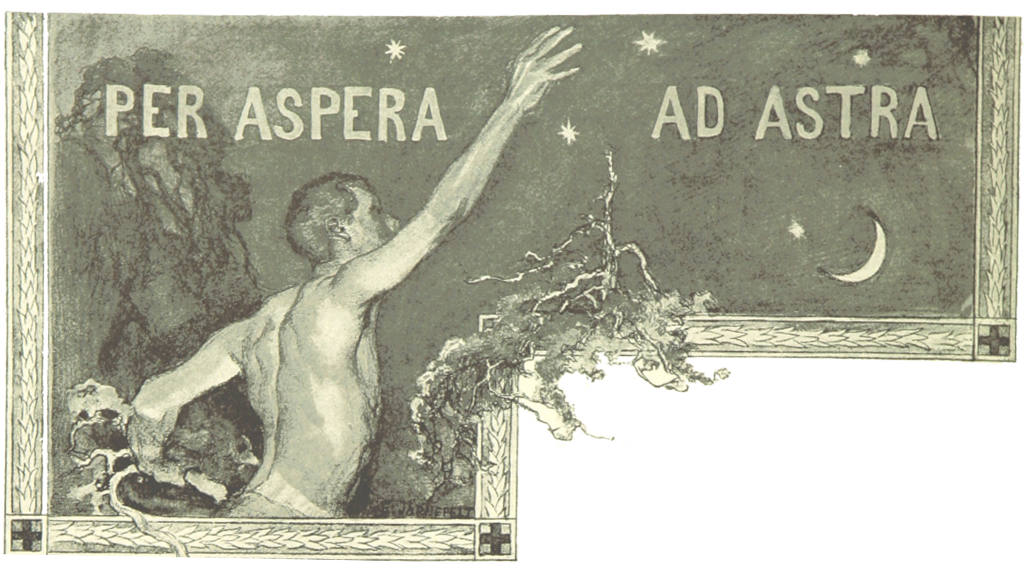
While all these is based on my personal experience and interpretation, I believe one of the most prominent themes that’s explored in Gris is that of the Heroe’s Journey. Also, as the Heroe’s Journey is a broad structure that can be a source of many topics in itself, I would say that there’s a specific approach that’s prominently explored in this game, that can be summarized with the Latin motto Per aspera ad astra (through difficulties to the stars).
There’s even an example where this is exposed quite literally, as the puzzles that gate the progression in the game require the player to collect stars that are scattered around to assemble a path of stars to ascend to the next level.
But the most interesting thing for me was to think about the more subtle ways in which mechanics and level design bits gamify distance and articulate it in a thematically consistent way:
Can’t reach
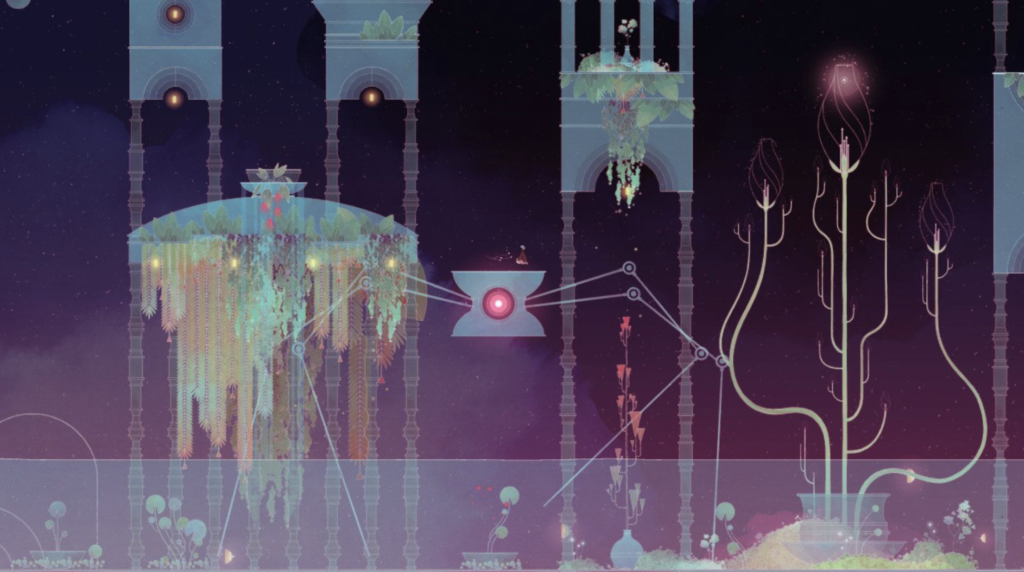
Often times the player comes across points where the target platform seems too far away, although it might not be clear from the beginning if the obstacle just requires quite some skill to overcome, or if it just can’t be reached without extrinsic support.
The solution might consist on getting help from other elements from the scene, like in the case shown in the screenshot above, where we need to wake up an ancient spider-like machine to access the lethargic flowers at the right of the screen.
The initial uncertainty around the right approach that’s initially inspired when encountering these these type of puzzles often inspires a feeling of impotence.
You’re almost there
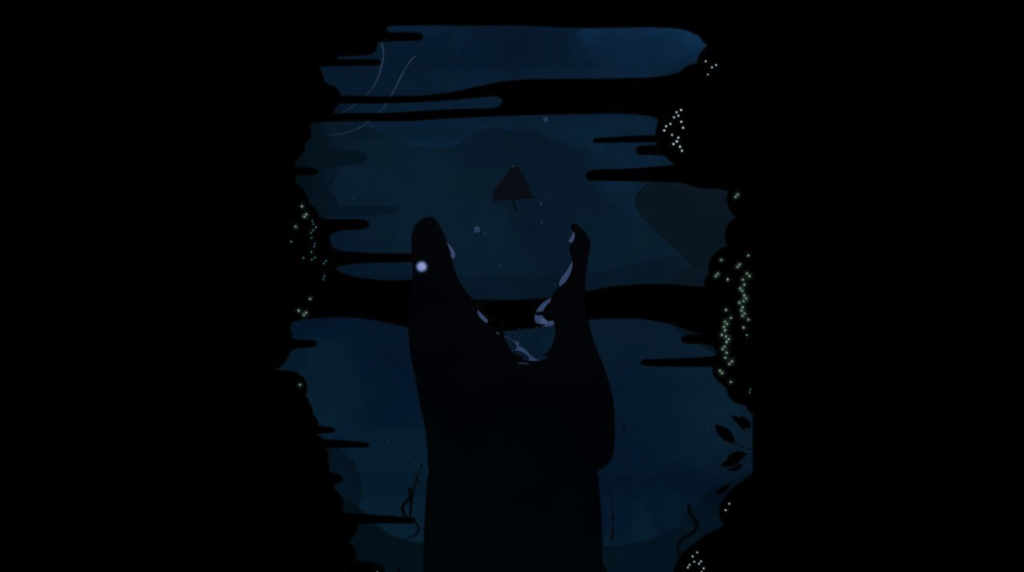
There’s another recurrent recurrent motif in the level design of Gris where the player gets to the goal by the narrowest of margins and just when it seemed impossible, which rises the stakes of the moment and delivers a great amount of tension in the resolution.
In the sequence shown in the screenshot above, a nasty giant snake follows Gris along dark and intricate submarine tunnels, and after a few scares where it seems that the creature is surely getting us, the main character escapes almost by miracle.
Leap of faith
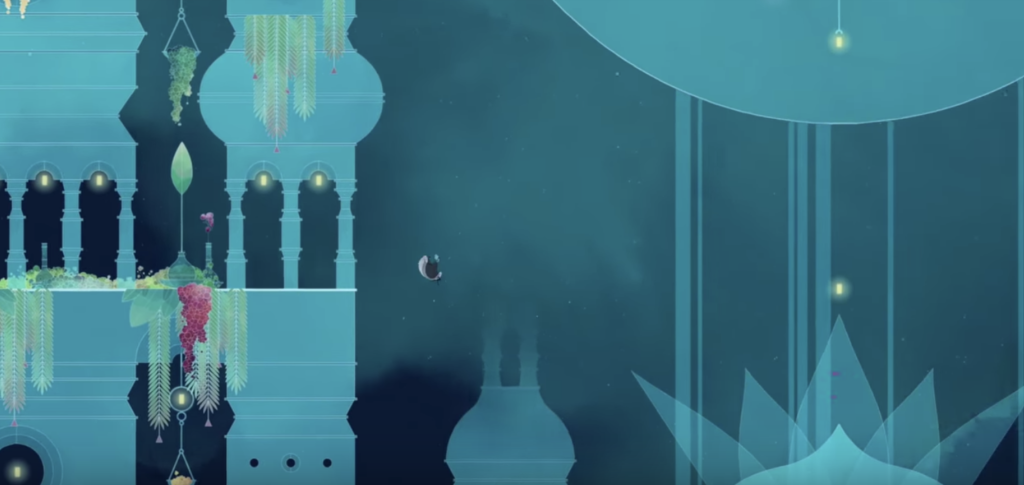
Some times in Gris, the best way to open your way throughout the space and get to the platform you want to reach is by jumping into the void and falling into the void.
Other times, when moving long distances, jumping from high platforms is not necessary, but it’s somehow naturally encouraged, as there’s no damage taken, it might save some time to reach the destination, and the overall game feel is good.
Still, each free fall implies that certain level of risk needs to be taken by the player, as she might fall into the wrong spot, and have to get back to the beginning. Intuition and skill might give the player some reassurance, but she won’t know until she’s taken the step, since the goal can’t always be seen from the starting point.
That’s scary, as a leap of faith is scary in real life, where you’re never sure if the step will take you where you want to go, and the difficulties to get back on one’s feet after a failure makes the prospects even more scary.
Free fall
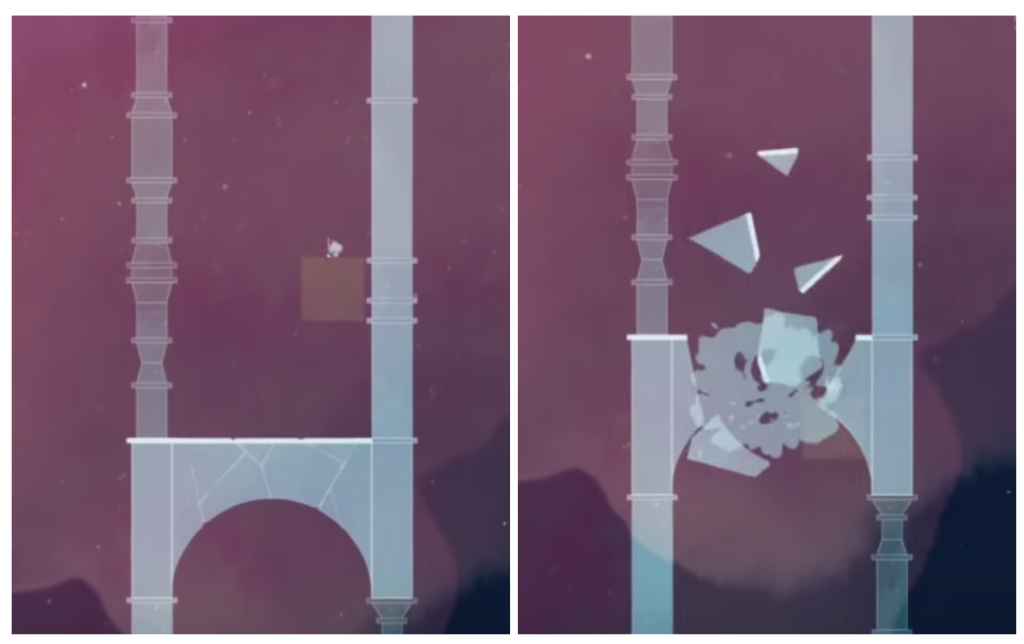
Somehow connected to the previous one is the concept of free fall, which stands out in the special skill Gris has to transform herself into a heavy block that breaks the ground and opens the way to other levels in the scene.
Inertia originates fast long falls into the void, a behaviour that is some times combined with the element of water to come out with nice physical reactions the player needs to coordinate to reach further surfaces.
Ascension
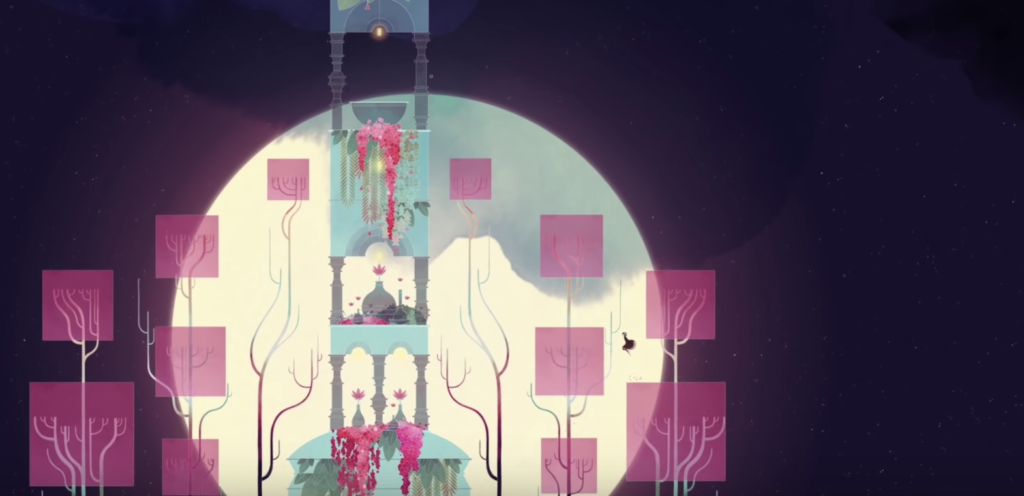
There are many ways in which we can see this concept being explored in Gris, and in which we could find parallelisms with the long rise from the bottoms of defeat to the elevated stars. Some times, for example, the center of gravity in the world swifts, so that falling is actually needed to ascend.
As Gris is actually a casual platform game, other times reaching the end requires just a few gracile jumps over a long sequence of platforms, as in the screenshot shown above.
Then also, as mentioned before, some of the puzzles that are gating progression require the player to collect stars that, once brought to the right place, build a ladder to open the way into the sky.
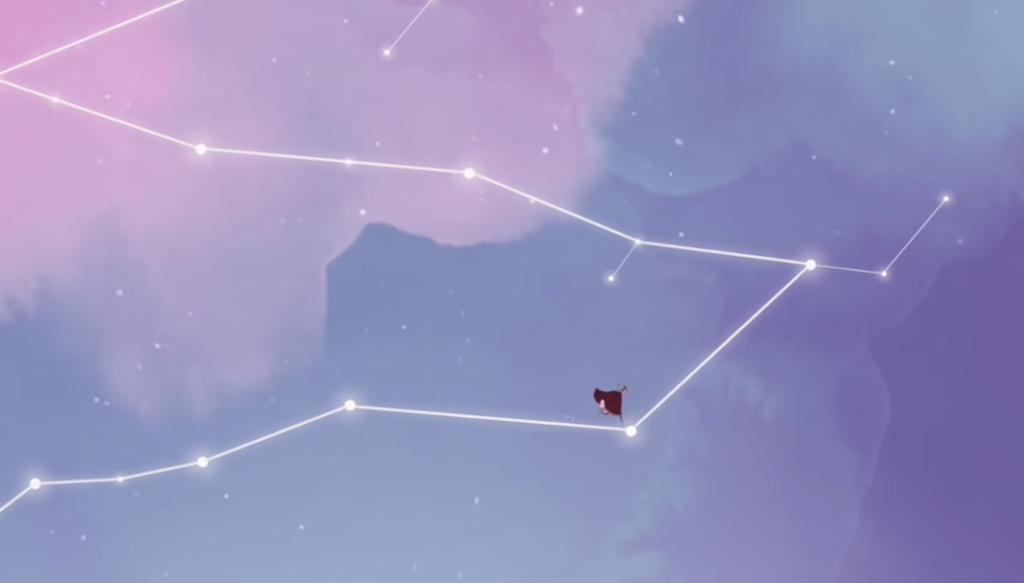
Finally, to reach high points, another mechanic consists on finding and jumping into these colourful butterflies that give Gris skyrocket impulse:
Long trip ahead
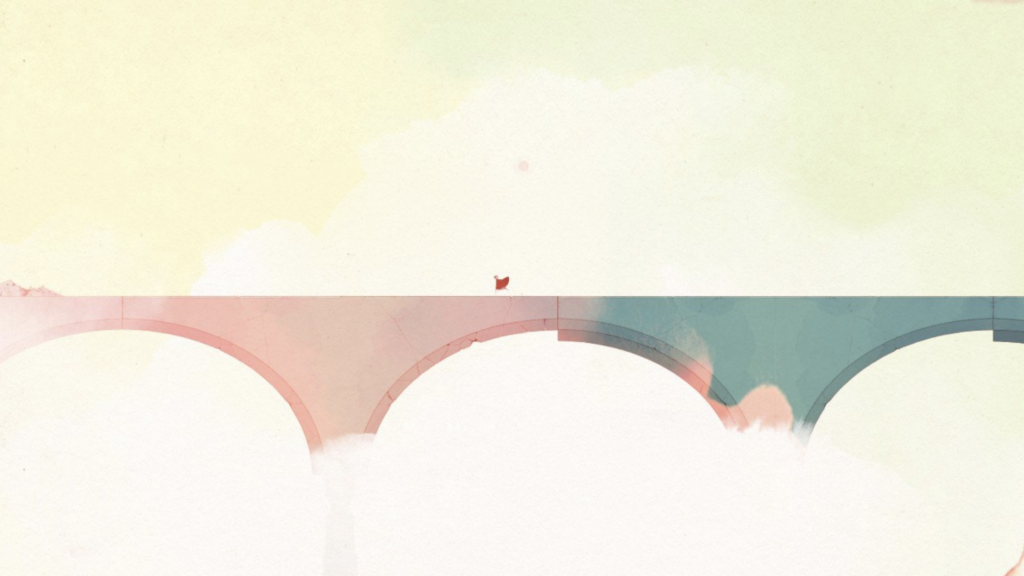
The reward of reaching the stars is big, but the road there won’t be easy. To frame the long trip ahead, nothing like a world populated by dessert and derelict spaces a-la-lost civilization, and vast natural landscapes we need to cross with our own means.
Long shots, parallax effects and a dream-like visual style emphasize the beauty and the immensity of the journey.
Last words
There are even more examples in Gris where platform game mechanics and level design support the theme and the progression of the story, but that was just a selection of the ones that somehow stuck to me.
Maybe that’s also part of it. Maybe some players will read meaning behind game mechanics in other ways; maybe others won’t see that at all, even though they need to overcome the same puzzles.
For me, it happened all of a sudden, that I was playing the game and thought “Why would these stairs be so unnecessarily long? Wait! There doesn’t seem to be a story in this game… but it seems that they’re actually telling me something with each interaction!”
I’m happy that I pulled the thread writing down this article, because now it feels like I unveiled something deep behind the apparent simplicity of the surface. Hope you liked discovering it with me. See you in the next article!
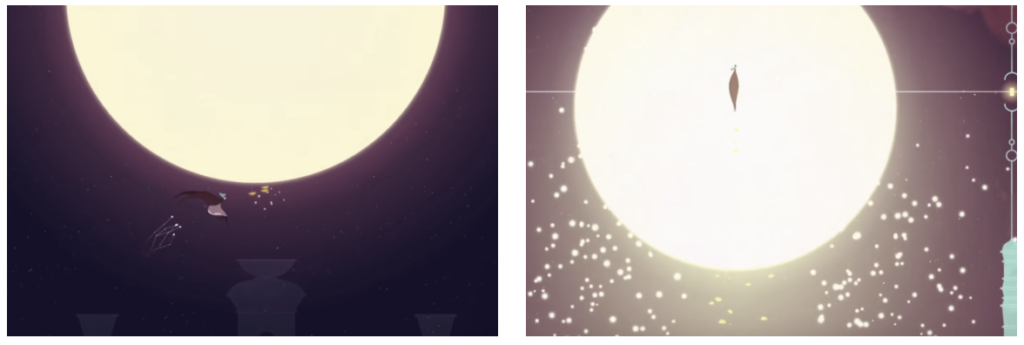
Leave a Reply